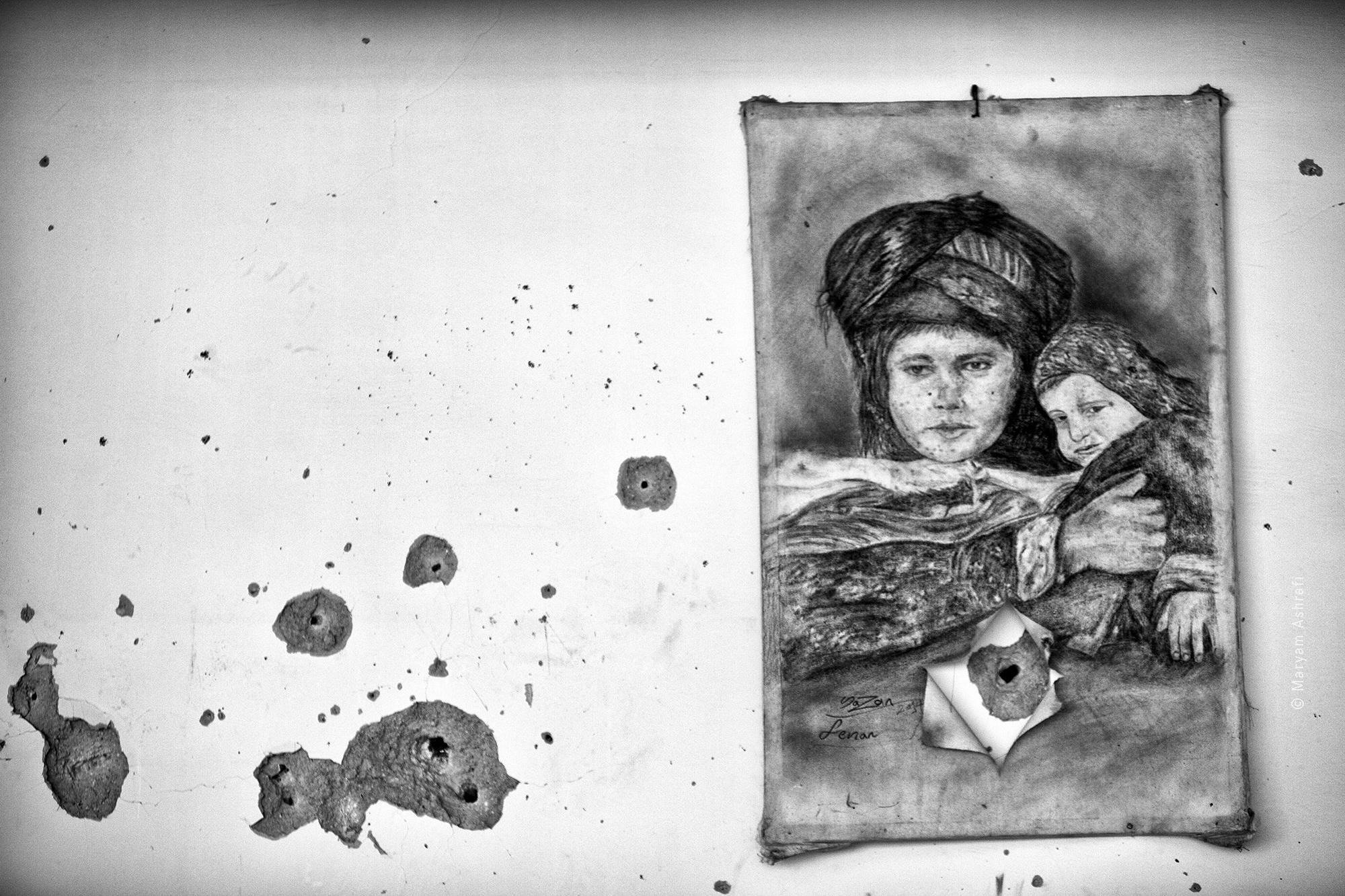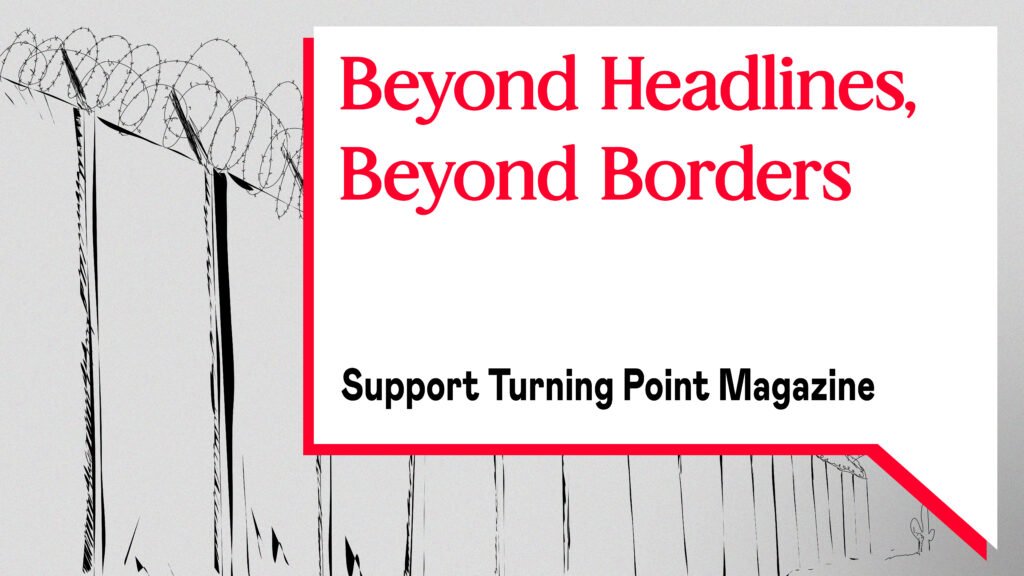The world is on fire. Climate change, economic instability, and conflicts are characterizing the 21st Century. This year, in over 70 countries, more than 4 billion people will vote in elections, though democracy has never been so frail. The growing detachment between institutional politics and society is pushing reactionary and right-wing extremists into power. Worldwide, there is an ever-increasing discontent on liberal democracy’s functions, while at least 56 countries are considered “electoral autocracies.” It is 20 countries more than during the Cold War, and the list is expanding.
In the West, the media has long lost its ability to check those in power. Instead, the mainstream media tends to overwhelm the public with information. Running after breaking news, publishing sensational articles on the cause de jour. Too often, this leaves the audience wondering what happened to a specific event after it left the media cycle. New technology has had a significant impact on how we consume articles and how we write news. The industry had been crippled by the endless search for profit. At the turn of the Century, news organizations cut staff, wages, and in-depth investigative stories. Many newspapers went under simply because they could no longer generate the profit margins needed to stay in print. Journalism became a job for the elite.
At the same time, people developed a wariness around mainstream media outlets and have begun to trust the news less and less. This growing disaffection has led to an alarming spread of misinformation and disinformation. Social media plays a pivotal role. State actors, for example, Russia or Israel, have employed trolls to spread fake news to win over the propaganda war. In turn, disinformation polarizes society and supports the rise of authoritarian regimes.
In this context, we — a group of journalists and advocates — have decided to launch a new magazine as an act of cultural resistance against the industry’s current trends. Media can’t be objective, but it can be truthful. Turning Point is an attempt to create a new way of thinking about and doing journalism.
We want to break the tyranny of the algorithm that keeps us misinformed and ignorant. We want this magazine to be an act of defiance against the hegemonic system of power we currently live under.
With Turning Point, we want to challenge ourselves and our readers to understand the world with new perspectives far from the mainstream lenses. We wish to make sense of the world by connecting different events and analyzing the dynamics in place so we can overcome the fragmentation inflicted on our society by how we currently access media. We want to break the tyranny of the algorithm that keeps us misinformed and ignorant. We want this magazine to be an act of defiance against the hegemonic system of power we currently live under.
At Turning Point, we take our time, reflect on specific issues, and then understand how those will impact society. We wish to highlight the many ongoing forms of resistance against the capitalist system and connect with struggling communities. Even though we are taught to believe we are few to struggle, this is not the reality. Far from the limelight, many people and communities are resisting in their own ways and using their own tools. We can learn from one another.
Our objective is to contribute, behind enemy lines, to creating a counter-hegemonic culture as a part of a revolutionary project. We will do so with a magazine because we are also convinced that “the destiny of the world is determined less by the battles that are lost and won than by the stories it loves and believes in.” We want to publish stories of resistance and struggle. We want to highlight different approaches. We will publish different opinions, even ones we might disagree with, as long as the article is competent, well-informed, and convincingly expressed. Each week, there will be a new story. Every four weeks, we will explore a new theme carefully discussed by the editorial team.
Therefore, it should be no surprise that the first theme we wish to tackle with this magazine is cultural resistance.
In the past 30 years, art has lost its soul, becoming a commodity rather than, as socialist playwright Bertolt Brecht put it, “a hammer with which we can shape reality.” This shift was initiated during the Industrial Revolution and the invention of mass production. Luxury goods suddenly became more affordable and within reach of the masses. During the second half of the 20th Century, liberalism and globalization began to assimilate the arts. The US hegemony shaped the Western world, imposing new values and tastes. It influenced cities and styles. Roughly more than 1.5 billion Western citizens have conformed to consumerism as a driving force in their lives.
When it is not assimilated, art is naturally nonconformist, critical, emotionally compelling, and fearless. It allows the oppressed to express grief, unbridled fear, pain, and solidarity. It challenges popular opinions, belief systems, and authorities and makes a mighty tool for activism. The arts are also essential if we want to shape a new world. (Albeit not taken seriously enough by leftist movements).
In the late 1920s, the Italian Marxist philosopher Antonio Gramsci pondered in his prison diaries why a revolution in the West had failed so far. Gramsci concluded that one reason was that revolutionary forces had underestimated the impact of culture and civil society. Power lies not only in institutions but in how people make sense of their world; hegemony is a political and cultural process. Armed with culture instead of guns, one fights a different type of battle. He then highlighted how culture can not be imposed from above, but it must come out of the experiences and consciousness of people.
Many communities and groups have refused to swap their heritage for Western ideals and consequently use the arts as a tool against colonization, violence, and assimilation.
This is true in the case of the Kurdish artist Zehra Doğan, who, whilst in a Turkish prison, was able to mount a fierce resistance through her paintings and the publication of a newspaper. Her conversation with Maryam Ashrafi, social documentary photographer and editor of Turning Point, is inspiring and eye-opening. There are many ways to resist, Doğan chose to paint what she saw.
Andrea Cegna, a journalist and activist, analyzes how revolutionary and political music has been declining in the West. Artists are not so close to the struggle, and the industry has wholly co-opted independent labels. Nonetheless, revolutionary music is strong elsewhere. In South America, the feminist movement Ni Una Menos has influenced several artists singing about the struggle in their work.
The Zapatista movement has also put a lot of emphasis on culture, and for their 30th anniversary, they set up a stage for local communities.
In the Middle East, specifically in Northern Eastern Syria, the Kurdish movement has empowered local artists to sing stories of the revolution in previously banned Kurmanci Kurdish.
There are many ways to interpret cultural resistance, so we asked several photographers what they thought of it. The result is a compelling photo essay with pictures from around the world and a text by Lauren Walsh.
Speaking of images, in one and a half years of use, AI has already generated about 15 billion of them. Photographers have taken almost the same number of pictures in the last 150 years. According to Amazon AI Lab, 57% of text on the internet is already partially or entirely AI-generated. With an article by the collective Jean Desta, Turning Point wishes to contribute to the fierce debate around art and AI.
In 2014, while accepting the National Book Foundation Medal, the writer Ursula Le Guin stated: “I think hard times are coming when we will be wanting the voices of writers who can see alternatives to how we live now. And can see through our fiercely stricken society and its obsessive technologies to other ways of being. And even imagine some grounds for hope. We will need writers who can remember freedom”.
We at Turning Point will try to do that.





